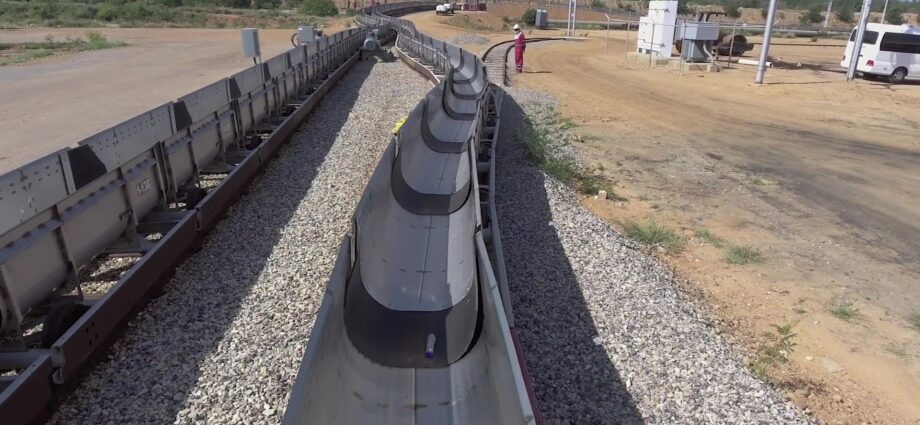In Africa’s fast-evolving mining sector, efficient materials handling is critical to project success—especially in operations with long haul distances, steep gradients, tight curves, or difficult terrain. For EPC (Engineering, Procurement, and Construction) contractors, haulage systems can become a major cost-driver, with a direct impact on project viability.
At the same time, mining companies across Africa are under increasing pressure to reduce carbon emissions, lower operational costs, and adopt smarter technologies. The answer for many lies in next-generation systems like Railveyor, which is gaining attention for combining the best of rail and conveyor technologies in a fully automated, energy-efficient, and flexible solution.
Why Railveyor Fits Africa’s Mining Landscape
Africa is home to a wide range of mineral-rich terrains—from Zambia’s Copperbelt and South Africa’s deep-level gold mines to the bauxite hills of Guinea and the iron ore deposits in Mauritania. Many of these environments are remote, topographically complex, and difficult to access with traditional haulage systems.
Railveyor provides a powerful alternative, offering high efficiency and adaptability for both surface and underground operations. The system features:
-
Steel rail cars connected in a train format with spillage-resistant flaps
-
Automated drive stations powered by electric motors (no locomotive needed)
-
Steel tracks on a light ballast base, which can be relocated quickly and easily
This makes Railveyor ideal for mines undergoing expansion or facing dynamic geological conditions—a common challenge in African mining regions.
Tackling Tough Terrain and Tight Budgets
Unlike conventional conveyors, which require large turning radii (typically 500 metres) and significant earthworks, Railveyor can navigate turns as tight as 20–30 metres, allowing for compact layouts that save space and cost.
Its ability to climb grades of up to 30% is particularly beneficial in hilly or mountainous areas like those found in parts of Ghana, Mali, Tanzania, or the DRC, where conveyor systems often struggle without major infrastructure modifications.
Additionally, Railveyor delivers a high payload-to-weight ratio, minimizing rolling resistance and maximizing throughput with less energy consumption—perfect for remote African mines with limited power infrastructure.
Automated, Digital, and Safe
Railveyor’s TrulyAutonomous™ system uses smart software and sensors to run the entire system with minimal human intervention. This helps mines overcome skilled labour shortages while improving safety and uptime.
-
VFD-controlled 75kW motors offer precise, real-time control of speed and torque
-
Centralized monitoring allows remote operation, reducing the need for on-site personnel
-
Energy regeneration during downhill runs lowers power demand
These features support Africa’s move toward digitization and smart mining, aligning with initiatives by governments and private operators across the continent.
Health, Safety, and Sustainability
Railveyor is fully electric, making it ideal for underground mines where ventilation costs and worker health are major concerns. The system produces no diesel fumes and operates quietly, creating a safer, more comfortable working environment.
For African mining companies under pressure to cut emissions, qualify for green financing, and comply with ESG standards, Railveyor offers a path to achieving these goals—without compromising on performance.
Proven Success, African Potential
Though the technology is already delivering strong results at sites like Agnico Eagle Mines’ Goldex complex in Canada—where operating costs dropped 75% and carbon emissions fell 39%—its potential for African mines is even greater.
With increasing pressure on the continent’s mines to improve efficiency, sustainability, and cost control, Railveyor presents a compelling solution for modern, future-ready material handling.
Conclusion:
As African mining companies and EPC contractors seek low-cost, high-impact technologies for complex and remote projects, Railveyor stands out as a practical and scalable option. From Zambia to Guinea, and from Tanzania to South Africa, this hybrid rail-conveyor system could reshape how the continent moves its minerals—efficiently, safely, and sustainably.




